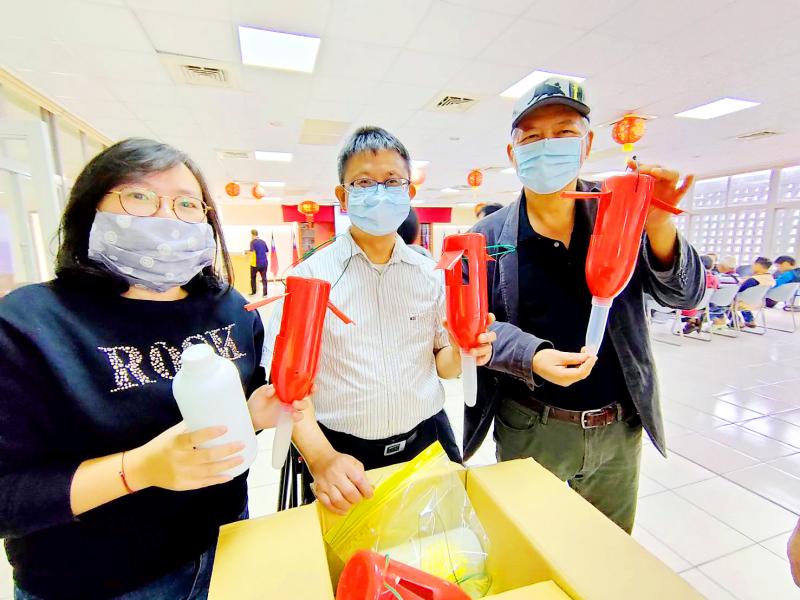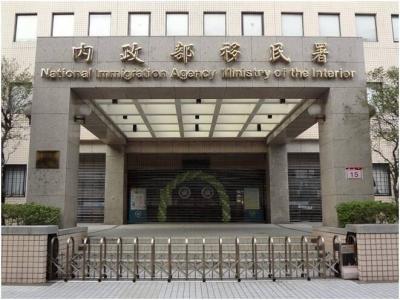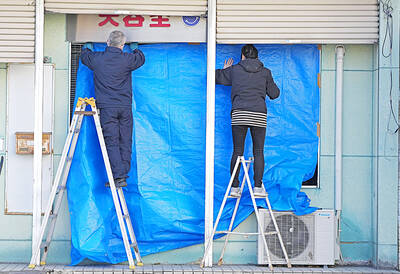An improved coffee borer beetle trap developed by the Council of Agriculture Tea Research and Extension Station could aid coffee growers in Nantou County’s Guosing Township (國姓).
The township is the largest coffee bean production area in the nation, with more than 200 hectares under cultivation.
Climate change has fueled northward migration of the beetles, which had previously remained largely in southern Taiwan, and the change is cutting into township residents’ profit margins.

Photo: Tung Chen-kuo, Taipei Times
More than 30 percent of coffee plants in the township are affected, the station said on Tuesday.
Fruit and raw beans eaten by the beetles create not only a net loss, but incur additional expenses as extra workers are needed clear the infected plants, the station said.
As the township has recently applied for product quality certification, locally produced coffee is subject to scrutiny and could not exceed a certain level of residual pesticide, the township said.
The station said its new version of the bug trap is cheaper than commercial models, as it has transferred the technology to producers, and is 20 percent more effective as the methanol and ethanol baits have been fine-tuned.
One fen (分) of land (969.92m2) could sustain between 120 and 150 coffee trees, and would need about 40 to 50 traps, station researcher Liu Chien-ju (劉千如) said.
Farmers could adjust the density of the traps depending on the amount of damage the beetles are causing to their crops, Liu said.
The township office yesterday said that it has set aside a NT$200,000 fund to subsidize 10 traps per farmer.
It urged farmers to collaborate on pest control to achieve the maximum effect.

A small number of Taiwanese this year lost their citizenship rights after traveling in China and obtaining a one-time Chinese passport to cross the border into Russia, a source said today. The people signed up through Chinese travel agencies for tours of neighboring Russia with companies claiming they could obtain Russian visas and fast-track border clearance, the source said on condition of anonymity. The travelers were actually issued one-time-use Chinese passports, they said. Taiwanese are prohibited from holding a Chinese passport or household registration. If found to have a Chinese ID, they may lose their resident status under Article 9-1

Taiwanese were praised for their composure after a video filmed by Taiwanese tourists capturing the moment a magnitude 7.5 earthquake struck Japan’s Aomori Prefecture went viral on social media. The video shows a hotel room shaking violently amid Monday’s quake, with objects falling to the ground. Two Taiwanese began filming with their mobile phones, while two others held the sides of a TV to prevent it from falling. When the shaking stopped, the pair calmly took down the TV and laid it flat on a tatami mat, the video shows. The video also captured the group talking about the safety of their companions bathing

PROBLEMATIC APP: Citing more than 1,000 fraud cases, the government is taking the app down for a year, but opposition voices are calling it censorship Chinese Nationalist Party (KMT) Chairwoman Cheng Li-wun (鄭麗文) yesterday decried a government plan to suspend access to Chinese social media platform Xiaohongshu (小紅書) for one year as censorship, while the Presidential Office backed the plan. The Ministry of the Interior on Thursday cited security risks and accusations that the Instagram-like app, known as Rednote in English, had figured in more than 1,700 fraud cases since last year. The company, which has about 3 million users in Taiwan, has not yet responded to requests for comment. “Many people online are already asking ‘How to climb over the firewall to access Xiaohongshu,’” Cheng posted on

A classified Pentagon-produced, multiyear assessment — the Overmatch brief — highlighted unreported Chinese capabilities to destroy US military assets and identified US supply chain choke points, painting a disturbing picture of waning US military might, a New York Times editorial published on Monday said. US Secretary of Defense Pete Hegseth’s comments in November last year that “we lose every time” in Pentagon-conducted war games pitting the US against China further highlighted the uncertainty about the US’ capability to intervene in the event of a Chinese invasion of Taiwan. “It shows the Pentagon’s overreliance on expensive, vulnerable weapons as adversaries field cheap, technologically